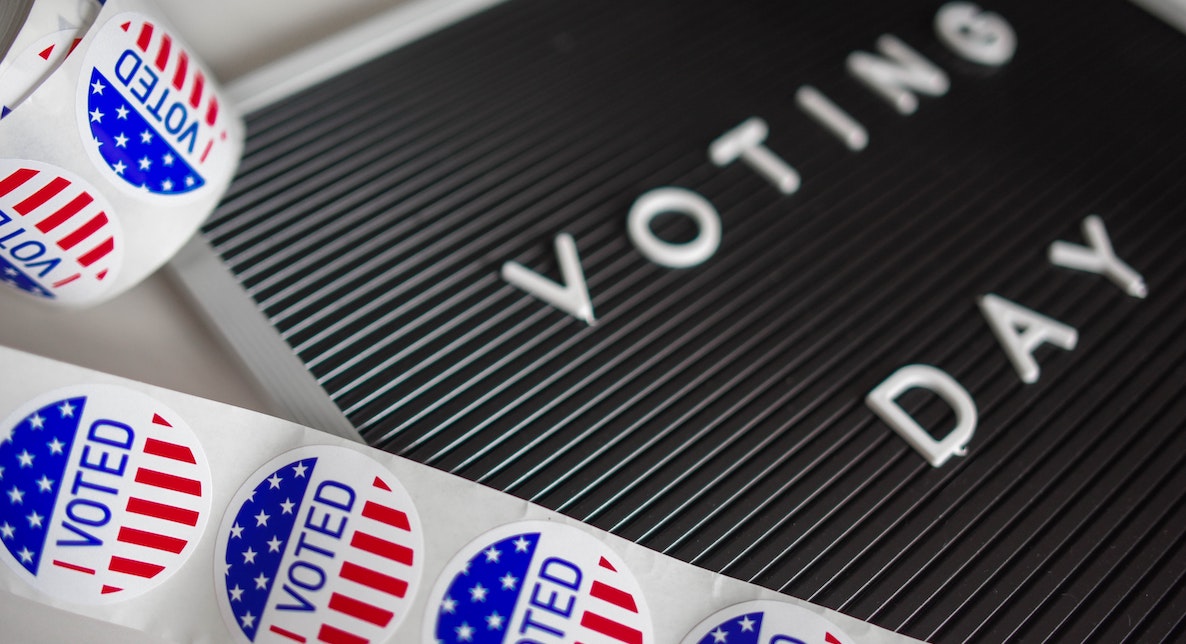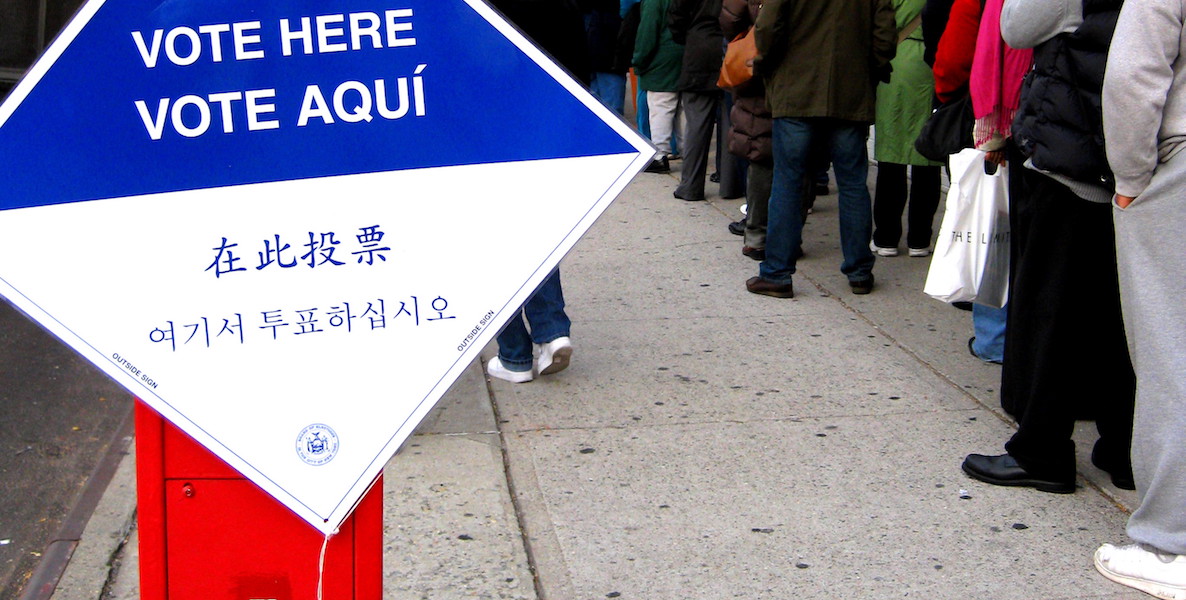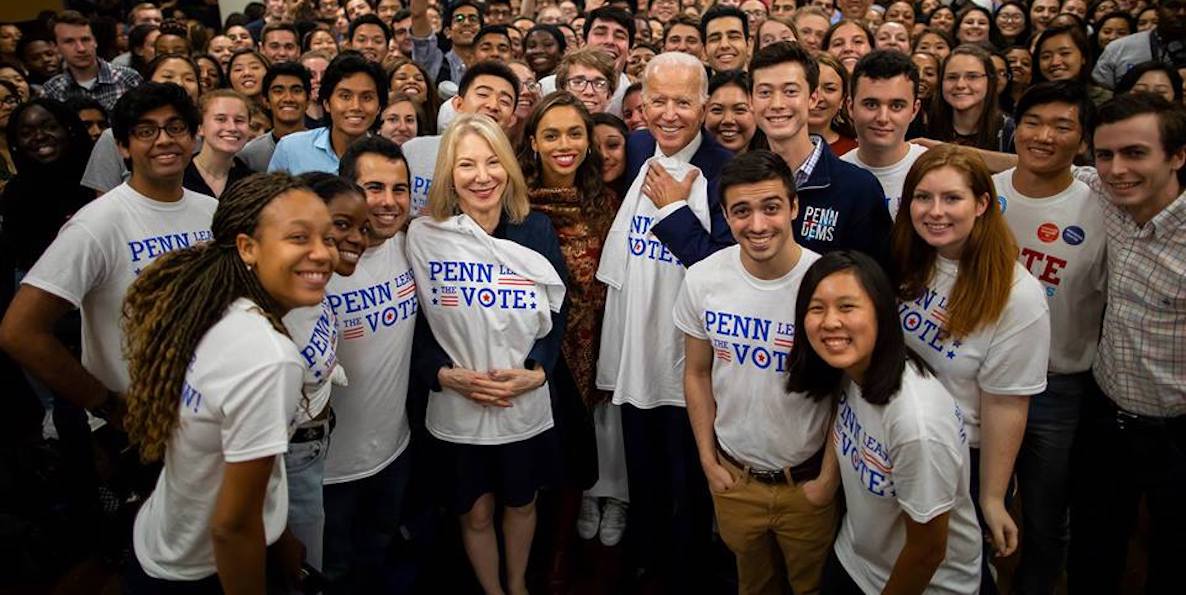When Lauren Underwood, the young Democratic challenger to Illinois Rep. Randy Hultgren, started her campaign last year, she was a clear underdog—a 32-year-old African American political novice in a predominantly white and Republican district. But she also had momentum on her side: She raised $4 million, twice as much as Hultgren, much of it from outside Chicago; she ran on preserving healthcare, a winning issue for Democrats last fall; and she benefitted from the Blue Wave that helped flip the house in November.

Prefer the audio version of this story? Listen to this article on CitizenCast below:

She also had on her side technological tools that in previous elections simply didn’t exist: Change Research, an online polling company, helped Underwood gauge voters’ opinions at a fraction of the cost of traditional polling. With Hustle, a texting app, Underwood’s campaign sent 210,000 messages to 36,000 voters, something research has shown is an effective way to bring people to the polls. And MobilizeAmerica, a web-based campaign management program, helped her coordinate volunteers, who knocked on 94,000 doors and made 73,000 phone calls.
“People want to invest in specific candidates and causes, but some of the things that will best help across the board are tools that can better target voters,” says Stohler, of Higher Ground Labs. “We should be focusing on how the long-term technologies can affect elections.”
Together, the efforts tipped the scales in Underwood’s favor by a margin of 10,400 votes. Now, she represents Illinois’ 14th Congressional District as the youngest African American woman ever elected to the House.
Underwood’s story is similar to those in mid-term races around the country in 2018, when a surge in mostly progressive-leaning technology companies entered the political sphere for the first time. And by all accounts, their influence will continue to grow—on both sides of the aisle. Hustle’s Republican-leaning counterpart RumbleUp boasts success in an Alabama primary election; OpnSesame is a texting platform launched by a former Trump campaign official; uCampaign is a startup that has developed apps for the National Rifle Association, among others. Those partisan efforts, in this case, can be good for democracy—by bringing more voters to the polls. That’s something we desperately need here in Philadelphia, where turnout in November—at just 53 percent—was the highest for a midterm in a generation.
“It turns out there’s been a gap in best of class talent for tech in politics,” says Jessica Alter, co-founder of volunteer organization Tech for Campaigns, which sent 10,000 volunteers to help on local Democratic races around the country. “That hit a nerve for people like me who are technologists. The silver lining of 2016, is that a lot of people woke up and want to be more involved.”
![]()
Pres. Obama’s 2008 campaign is credited as the first to capitalize on technology, in part because it marked the start of an era: The iPhone was a year old, and Obama’s progressive young staffers were the first to really integrate cell phones, emails and websites to connect a grassroots movement across the country. Four years later, Obama’s was again the most technologically-advanced campaign in American history, as Alex Howard noted in MIT Technology Review: His team used software and data science for fundraising, canvassing, organizing and media buys, and utilized social media feeds for personalized messaging. By 2016, as we all now know, Facebook and other social media platforms came to dominate much of the political sphere, something that benefitted now Pres. Donald Trump despite Hillary Clinton’s much more sophisticated technology team.
Those campaigns hired their own technologists, to develop the tools they needed in-house, an expensive and time-consuming process that is often inaccessible for smaller races. But the election of Trump had a galvanizing effect on left-leaning Silicon Valley, and in the last few years, several companies have launched to help Democratic politicians use technology in the most effective way. “People want to invest in specific candidates and causes, but some of the things that will best help across the board are tools that can help lower the cost of campaigning and improve the efficacy of campaign work,” says Maggie Stohler, of Higher Ground Labs, an incubator and accelerator for progressive campaign tech companies. “We should also be focusing on how the long-term technologies can affect elections.”
“People are interested in finding silver bullets—there isn’t one,” says Alter. “There needs to be coordination, like between knocking on doors and texting. It can’t be one or the other.”
Higher Ground Labs was founded in May, 2017, by two Obama campaign workers and a former Deputy Chief Technology Officer under his presidency with a market-forward premise: That competition breeds the best innovation. They have invested in 24 for-profit companies so far, including Hustle, MobilizeAmerica and Change Research. In Pennsylvania, those companies were deployed in the victorious campaigns of now state Senators Linda Fields (of Pottstown area); Tim Kearny (of Delaware County); Katie Muth (of Western PA); and state Rep. Susan Wild (of Lehigh County).
They are selecting their next cohort now, with an eye to the 2020 Presidential election. Stohler says they are specifically interested in technologies that will help campaigns better run as organizations, optimize media buys, increase civic participation among “under-utilized citizens,” and help to fight disinformation.
![]()
In the run up to the midterms, Stohler says they found the greatest need among campaigns was for tools that could help them organize their staff and volunteers. And the tech success stories thus far are extensions of what Columbia University politics professor Donald Green, author of Get Out The Vote, has said is the most effective tool for bringing people to the polls: The personal touch.
In California’s Central Valley, for example, Democrat TJ Cox used MobilizeAmerica to organize volunteers for phone banking and canvassing; they knocked on 28,500 doors in the district, according to the company, which helped propel Cox over his Republican opponent by just 591 votes. Green says canvassing—at least until now—has proven to be the most successful GOTV effort, but it is a slog: For every several hundred people contacted, campaigns can expect a handful of votes. “It’s slow and steady work, and the only way to have an impact is to do it at scale,” Green says—as Cox was able to do.
Personal, though, has taken on a new meaning in our digital era. In 2018, texting—especially to those in people’s personal circles—appears to have had a significant impact in turning out the vote. According to Hustle—which allows users to send 100 texts in an hour—50,000 Democratic volunteers used Hustle to send 200 million messages to over 47 million voters in the midterms. That is, as Green would say, “at scale.” Among Hustle candidates were Massachussetts’s Ayanna Pressley, Minnesota’s Ilhan Omar and Colorado Governor Jared Polis—all groundbreaking candidates who won their races. (Hustle’s clients also include companies and nonprofits, including Temple University.) The Tuesday Company, also launched in response to the 2016 election, uses personal contacts and social media to spread a candidate’s message from volunteers to potential voters in their networks. In the midterms, Tuesday’s TEAM platform was used in 25 states, including to help elect Susan Wild in Pennsylvania’s 7th Congressional District.
The tech success stories thus far are extensions of what Columbia University politics professor Donald Green, author of Get Out The Vote, has said is the most effective tool for bringing people to the polls: The personal touch.
Similarly, Voter Circle gives candidates access to supporters’ contacts, allowing them to pinpoint through voter rolls which ones are eligible to vote for them; it then allows supporters to easily send a personalized message to their friends advocating for the candidate. And Vote With Me lets users nudge their friends in any swing district by scanning contacts for those whose votes might have the biggest impact; again, the text comes from users themselves, so is a “personal touch.”
There is a risk to this sort of outreach, of course. “Those kind of heavy-handed tactics impose other costs on social networks,” Green says. “Your friends might not appreciate it.” But he adds that there is evidence dating as far back as 2016 that texting helps bring people to the polls better than other methods of communication, in part because texting has a much higher open rate than emails or even phone calls. And Alter, at Tech for Campaigns, says her group is compiling data from 2018 that found texting was a game changer in some races.
![]()
Tech innovations are having an impact on turnout in another way, as well: Through voter registration. Through Map The Vote, Alter says volunteers in Texas built a product that allowed campaigns to see at which addresses in their district potential voters were not registered. That allowed campaign volunteers to reach out to those people, register them, and encourage them to vote. Texas, unlike Pennsylvania, does not have online registration. But the principle could work the same here: In Philadelphia, this could help to target particular addresses for GOTV groups who already send outreach workers out with tablets to register people online.
This all points to technology becoming a bigger and more potent tool for getting out the vote—though there is no indication, for now, that the United States will go as far as Estonia, which 14 years ago initiated online voting, which has coincided with an increase in voter turnout (without any major security breaches). But, as is true of all tech innovation, it can’t work alone. “People are interested in finding silver bullets—there isn’t one,” says Alter. “There needs to be coordination, like between knocking on doors and texting. It can’t be one or the other.”
Alter and her co-founders, all tech entrepreneurs—she ran and sold FounderDating, a platform to connect entrepreneurs with advisers—were pushed to take action after Trump’s first Muslim ban in February, 2017. Collectively, they sent out an email to about 100 people in their networks, asking if they’d be interested in donating time to progressive campaigns. Within three days, 700 people had signed up. Today, Tech for Campaigns has 10,000 volunteers, who have worked on 250 projects for 133 separate campaigns, including several Pennsylvania senate races in 2018.
To Alter, those local races is where the work is most meaningful. In part, that’s a question of efficiency: State races are far less expensive to run, so their efforts can go further. It is, also, a matter of importance. In Philadelphia, the relatively high midterm turnout bodes well for 2020, especially compared to 2016, when many Philadelphians stayed home. But it’s local races, city and state, where decisions that most affect people’s lives are made. If a round of texts can up the interest there, it’s welcome.
“A ton is happening in the state legislatures, but those races are underinvested in by the party,” Alter says. “Pick any issue you care about, it starts at the state level. People miss that connection, but it’s how you make change.”
This article is supported by the Solutions Journalism Network, a nonprofit dedicated to rigorous and compelling reporting about responses to social problems.
Photo via Trulioo







